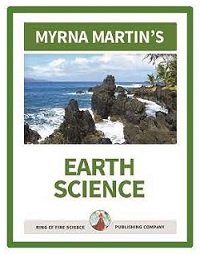P waves travel inside the Earth
P waves and S Waves are body waves
P waves
P waves are primary waves that are produced by all earthquakes large and small. Rock breaking along a fault line release the energy stored in the rocks when the rocks break due to pressure inside the Earth creating primary waves that are also known as compression waves.
S waves
S waves are also always produced during an earthquake. S waves are transverse waves that move forward in a back and forth motion are also called secondary waves. These waves arrive at reporting stations after P waves. S waves and P waves are known as body waves because they travel through the body of the Earth.

Slinky demonstrating how primary waves travel through the Earth Myrna Martin
Body Waves traveling through Earth
P waves expand and contract rock particles
The focus of an earthquake is the point where the rocks break apart at the start of an earthquake. These waves travel in all directions away from the focus of an earthquake. P waves are energy waves that cause rock particles inside the earth to expand and contract like the slinky in the picture as they move through the body of the Earth.
P waves traveling through the body of the Earth
Compression waves expand rock particles ahead of the waves and compress them as they travel away. They can also compress and expand air. When compression waves reach the Earth's surface they create a noise often associated with earthquakes. Sometimes people hear a sharp thud while others think the sound is loud and like wind blowing through leaves in a tree. People sleeping are sometimes awakened by the noise as the earthquake arrives at their home.


Click for More Information and to Order
Seismographs record seismic waves
Seismographs
Seismographs are instruments that record earthquake waves when they arrive at reporting stations on the surface of the Earth. Lines on seismograms show the motion in the Earth as the waves travel to and from the reporting station.
P waves are primary waves
Primary waves are P waves that arrive at recording stations first. They are the fastest waves produced by an earthquake.
S waves are secondary waves
S waves are produced by all earthquakes. S waves arrive a short time after P waves at recording stations. Scientists use the travel time of the two waves to determine the distance the between the focus of an earthquake and the reporting station. Scientists use at least three reporting stations to calculate the exact point where the earthquake originated.
Discovering the MOHO boundary
Discovering the boundary between the crust and mantle of the Earth
P waves move through solids, liquids and gases. S waves only travel only through solids. The earthquake waves are deflected when the composition of rocks within the Earth change. The scientist who discovered the boundary between the crust and mantle discovered the boundary when he noticed that earthquake waves were deflected at different depths underground. The Moho boundary is deeper under the continents than under the oceanic crust.
Discovering Earth's outer and inner cores
Beno Gutenberg discovers Earth's core
Beno Gutenberg discovered the liquid outer core while studying body waves. He found that S waves were stopped at a depth of 2900 km beneath the surface of the Earth. This is the boundary between the mantle and the liquid outer core.
Inge Lehmann discovers Earth's inner core
Inge Lehmann in 1936 studying earthquake waves that originated in Japan. She found that P waves sped up inside the core of the Earth for a distance before they slowed down. She used the travel times of these waves through the center of the Earth to prove the existence of a solid inner core of the Earth.
KIDS FUN Science Bookstore
Check out Myrna Martin's award winning textbooks, e-books, videos and rock sets. The Kids Fun Science Bookstore covers a wide range of earth science topics. Click here to browse.










